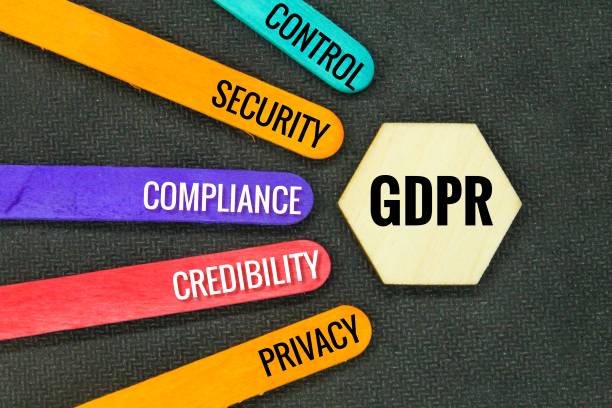Personal data protection has become a priority for both businesses and individuals in the digital age. The General Data Protection Regulation (GDPR), implemented by the European Union, establishes a robust framework to ensure the privacy and security of personal data. In this article, we will explore the key aspects of the GDPR and provide a practical guide to help businesses comply with its requirements.

What is the GDPR?
The General Data Protection Regulation (Regulation (EU) 2016/679) is a European Union legislation that came into force on May 25, 2018. Its main goal is to protect the personal data of EU citizens and give them greater control over how their data is used. Additionally, the GDPR sets clear obligations for organizations that process this data.
Why is the GDPR Important?
The GDPR is crucial because it strengthens data protection in an increasingly digital world. Data breaches can have severe consequences, including economic losses, reputational damage, and legal sanctions. Complying with the GDPR not only avoids significant fines but also builds trust with customers and protects the company against legal risks.

Principles of the GDPR
The GDPR is based on several fundamental principles that guide the processing of personal data. These principles ensure that data is handled fairly, transparently, and securely.
- Lawfulness, Fairness, and Transparency
Personal data must be processed lawfully, fairly, and transparently in relation to the data subject. Organizations must inform individuals about how their data is collected and used, ensuring they understand the purpose of the processing.
- Purpose Limitation
Personal data must be collected for specified, explicit, and legitimate purposes and not further processed in a manner that is incompatible with those purposes. This means that businesses cannot use data for different purposes without obtaining the individual’s consent.
- Data Minimization
Only the personal data that is adequate, relevant, and limited to what is necessary in relation to the purposes for which it is processed should be collected. Organizations should avoid excessive data collection and delete unnecessary data.
- Accuracy
Personal data must be accurate and, where necessary, kept up to date. Organizations must take reasonable steps to ensure that inaccurate data is corrected or deleted without delay.
- Storage Limitation
Personal data must be kept in a form that permits identification of data subjects for no longer than is necessary for the purposes for which the data is processed. Companies should establish data retention policies and ensure data is securely deleted when no longer needed.
- Integrity and Confidentiality
Personal data must be processed in a manner that ensures appropriate security, including protection against unauthorized or unlawful processing and against accidental loss, destruction, or damage. This involves implementing suitable technical and organizational measures.
Data Subject Rights
The GDPR grants individuals several rights over their personal data, and businesses must be prepared to respect and facilitate these rights.
- Right of Access
Individuals have the right to obtain confirmation of whether their personal data is being processed and, if so, access to that data and additional information about its processing.
- Right to Rectification
Individuals can request the correction of inaccurate or incomplete personal data. Companies must respond to these requests in a timely manner.
- Right to Erasure (Right to be Forgotten)
In certain cases, individuals have the right to request the deletion of their personal data. This applies when the data is no longer necessary for the purposes for which it was collected or when the individual withdraws their consent.
- Right to Restriction of Processing
Individuals can request the restriction of processing of their data in specific circumstances, such as when they contest the accuracy of the data or object to the processing.
- Right to Data Portability
Individuals have the right to receive their personal data in a structured, commonly used, and machine-readable format and to transmit those data to another controller without hindrance.
- Right to Object
Individuals can object to the processing of their personal data in certain situations, such as when the data is used for direct marketing or when processing is based on the company’s legitimate interests.

Business Obligations
To comply with the GDPR, businesses must adopt a series of measures and practices. Here are some of the main obligations.
- Designation of a Data Protection Officer (DPO)
In some cases, businesses must designate a Data Protection Officer (DPO). This is mandatory for public authorities and organizations that conduct regular and systematic monitoring of individuals on a large scale or process large-scale special categories of data.
- Data Protection Impact Assessments (DPIA)
Organizations must conduct Data Protection Impact Assessments (DPIA) when data processing could result in a high risk to individuals’ rights and freedoms. This includes risk assessment and the implementation of measures to mitigate those risks.
- Record of Processing Activities
Companies must maintain a record of their personal data processing activities. This record should include details such as the purposes of processing, categories of data, and data recipients.
- Data Breach Notification
In the event of a data breach, companies must notify the relevant data protection authority without undue delay, and within 72 hours if possible. If the breach poses a high risk to individuals’ rights and freedoms, affected individuals must also be notified.
- Implementation of Security Measures
Businesses must implement appropriate technical and organizational measures to ensure a level of security appropriate to the risk. This may include data encryption, access controls, and employee training on data protection.
Steps to Comply with the GDPR
Complying with the GDPR can seem daunting, but with a systematic approach, businesses can achieve it. Here are some key steps to get started:
Assess the Current Situation
Conduct a data audit to understand what personal data is collected, how it is processed and stored, and who has access to it. Identify any compliance gaps and areas of risk.
Appoint a Data Protection Officer
If necessary, appoint a Data Protection Officer (DPO) or an internal responsible person to oversee GDPR implementation and act as a contact point.
Develop Policies and Procedures
Create and update privacy policies, privacy notices, and internal procedures to ensure they comply with the GDPR. This includes data retention policies, data breach response procedures, and processes for handling data subject rights requests.
Train Staff
Provide regular training to employees on the importance of data protection and proper practices for handling personal data. Ensure everyone understands their responsibilities under the GDPR.
Implement Security Measures
Adopt technical and organizational measures to protect personal data. This may include data encryption, access controls, system monitoring, and incident response plans.
Review and Improve Continuously
GDPR compliance is not a one-time effort. Conduct regular reviews and data audits to ensure ongoing compliance. Be prepared to adapt to changes in regulations and best practices.

 Employeer and business Information about Employeers, plataforms and works
Employeer and business Information about Employeers, plataforms and works 



